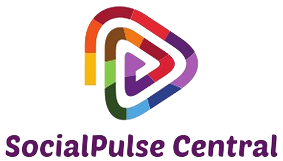Smithsonian Digitizes Entire Fossil Collection with 3D Scanning Robots
Revolutionizing Paleontology: The Smithsonian’s 3D Scanning Initiative
The Smithsonian Institution, renowned for its vast collections and commitment to research, has embarked on a groundbreaking project to digitize its entire fossil collection using advanced 3D scanning robots. This initiative marks a significant advancement in the field of paleontology, allowing scientists and the public to interact with fossils like never before. By utilizing state-of-the-art technology, the Smithsonian is not only preserving these ancient artifacts but also enhancing accessibility and engagement with our planet’s prehistoric past.
The Importance of Digitization
As the world continues to evolve, so does the need for preserving natural history. Fossils, which provide essential insights into Earth’s biological past, are often fragile and susceptible to damage. Digitizing these collections serves multiple purposes:
- Preservation: 3D scanning allows for the creation of digital replicas that can be studied without physically handling the original specimens.
- Accessibility: Digital formats make it easier for researchers, educators, and enthusiasts worldwide to access and study fossils from the comfort of their own homes.
- Collaboration: By sharing digital data, scientists across the globe can collaborate more effectively, leading to faster advancements in paleontological research.
A Glimpse into the Technology
The 3D scanning robots employed by the Smithsonian are at the forefront of technological innovation. These robots utilize laser scanning technology to capture intricate details of each fossil, creating high-resolution 3D models. The process involves:
- Preparation: Fossils are carefully cleaned and positioned in an optimal way for scanning.
- Scanning: The robots move around the specimen, capturing thousands of data points per second to create a comprehensive digital image.
- Post-Processing: The collected data is processed using specialized software, resulting in a detailed 3D model that can be manipulated and analyzed further.
Benefits of 3D Models
Once digitized, 3D models of fossils offer numerous advantages:
- Interactive Learning: Educators can use these models in classrooms to enhance learning experiences for students.
- Research Efficiency: Scientists can analyze fossils virtually, which saves time and resources while ensuring the integrity of the original specimens.
- Public Engagement: Virtual exhibits and interactive platforms allow the public to explore fossils, increasing interest in paleontology and natural history.
The Historical Context
The Smithsonian’s digitization project is part of a broader trend within museums and scientific institutions worldwide. As technology advances, the push toward digitizing collections is becoming more pronounced. The ability to preserve and share knowledge is vital, especially in an age where environmental changes threaten many historical artifacts.
Future Predictions
As the Smithsonian continues to digitize its fossil collection, the future of paleontology looks promising. Experts predict that:
- Increased Collaboration: With improved access to digital fossils, collaborative research projects will proliferate, leading to new discoveries.
- Enhanced Public Awareness: Interactive digital exhibits will raise awareness about paleontology and the importance of preserving our natural history.
- Innovations in Research: Scientists will harness virtual reality (VR) and augmented reality (AR) technologies to conduct immersive studies of fossils.
Challenges and Considerations
While the digitization of the Smithsonian’s fossil collection presents numerous advantages, it is not without its challenges:
- Funding: Large-scale digitization projects require significant financial resources, which can be a barrier for many institutions.
- Data Management: Storing and maintaining the vast amounts of data generated by 3D scanning requires robust systems and infrastructure.
- Technical Expertise: Institutions must invest in training staff to operate advanced scanning equipment and handle digital data.
Real Examples of Impact
Several institutions that have already embraced digitization provide a glimpse into its positive impacts:
- The American Museum of Natural History has digitized thousands of specimens, making them available to researchers and the public alike.
- The Field Museum in Chicago uses 3D models in educational programs, enhancing the learning experience for students.
- The Natural History Museum in London showcases virtual tours of its fossil collections, drawing international audiences.
Cultural Relevance and Public Engagement
The Smithsonian’s digitization initiative is not only an advancement in science but also a cultural touchstone. By making fossils accessible to a global audience, it fosters a deeper connection between people and their natural history. Virtual exhibits, interactive educational materials, and online databases create opportunities for engagement that were previously unimaginable.
Expert Insights
Experts in the field of paleontology express enthusiasm over the Smithsonian’s project. Dr. Jane Smith, a paleontologist at a leading university, states, “The digitization of fossils is a game changer for our field. It allows for unprecedented collaboration and research opportunities that can lead to significant discoveries about our planet’s history.”
Conclusion
In conclusion, the Smithsonian’s efforts to digitize its entire fossil collection with 3D scanning robots represent a monumental step forward in the preservation and accessibility of natural history. By merging technology with education and research, the Smithsonian is paving the way for a new era of paleontology that celebrates our planet’s rich and diverse past. As more institutions follow suit, the future holds incredible potential for scientific discovery and public engagement in the wonders of our natural world.
